Aso Grassland Conservation Centre was newly opened in Aso city on 19 April 2015 to raise awareness of value of grassland, its conservation history and promote further utilization.
The center consists of two main facilities, one for Education and another for Information. This is the first educational center for grassland conservation in Japan.
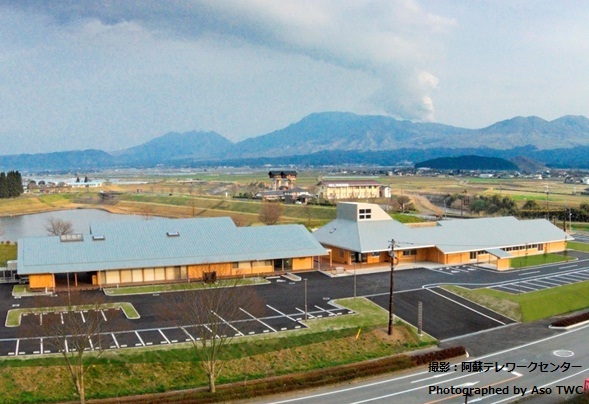
The Grassland Conservation Centre
【Grassland Education Centre】
Education Centre as its name, opened as a learning space, where community as well as visitors can learn about Aso’s symbolic grassland. The exhibition space includes diolama which describes clearly about areas of grassland along Aso Geopark areas, a lounge with audio facility; unique interactive exhibition panels demonstrate how people has utilized the grassland in dairy life, how to maintain the land, and its value.
There are also multiuse meeting and training space together with outside working space, where is used by volunteers for burning fields to make tools or crafts making.
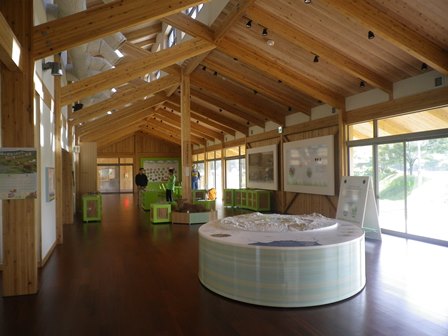
Exhibition hall

Lounge
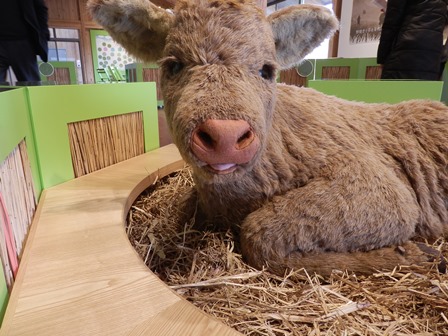
Model of Akaushi (Japanese brown cattle) grazed in the grassland
Original post with thatched roof made by Aso Chuo High School Students
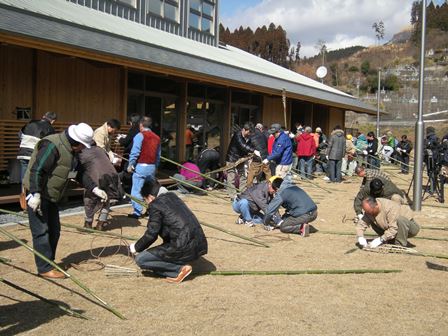
Making tools for extinguish fire at field burning by volunteers
【Grassland Information Centre】
The center has function as general enquiry department. Information on grasslands, conservation activities, related events and tourism are available for everyone.
Aso’s Symbolic Vast Grassland on Pyroclastic Flow Plateau
Why the grassland has remained open for many years is not only by repeated volcanic eruptions and ash deposits have prevented trees from growing, but also by human management, which includes grazing, grass harvesting and controlled burning, has also played a large role. The grasslands are a historic product of coexistence between humans and nature that has lasted for at least 1,000 years. The grass has been used for thatched roof, and also for green manure for poor condition of volcanic soil.
Although the role of volcanic eruptions is significant, controlled fields burning is believed to have a particularly beneficial impact on the grasslands. Burning suppresses the growth of large plants, allow meadow plants and animals to thrive, and helps protect both water resources and soil. Ultimately it also contributes to the local economy by enabling livestock industry to prosper and, more recently, attracting tourists.
However because of decreasing numbers of
local labors and its aging as the workload for burning field is so heavy, the
conservation activity is on risk to continue.
Aso Grassland Regeneration Committee (local pasture association, NPO, researchers,
government and other related organizations including Aso geopark) as a centre,
has working together in conservation, bio-diversity, education, tourism and
controlled management.
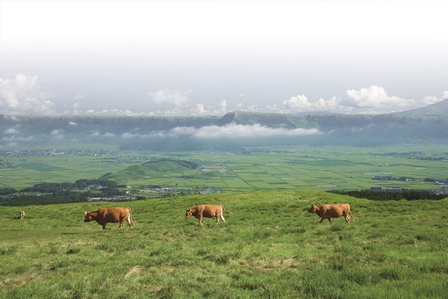
Grassland